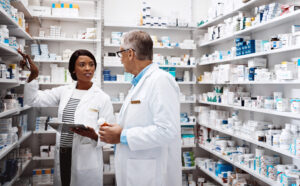
Perfecting Patient Profiles: 3 Tactics for Safer Pharmacy Practice
Use these three tactics to develop a solid patient profile process to ensure the right patient gets the right medication, every time.
Welcome to the Safety IQ Blog! We strive to create blog content that will help community pharmacies across Manitoba to improve pharmacy practice and reduce the chances of patient harm. Have a post topic or guest author to suggest? Contact us by email at safetyiq@cphm.ca.

Use these three tactics to develop a solid patient profile process to ensure the right patient gets the right medication, every time.

Bar coding can be an affective way to ensure safe, accurate medication dispensing, but there are some pitfalls. Raise awareness of bar code system weaknesses to safeguard patient safety today.

Recognize Pharmacy Technician Day 2023 by learning more about the key role pharmacy technicians play in continuous quality improvement.

Applying clinical knowledge is key to ensuring patient safety in community pharmacy. Learn three ways you can improve clinical knowledge practices to safeguard patient safety.

Use these three simple techniques to answer the World Health Organization’s call to elevate patient voices this World Patient Safety Day.

Pharmacies are under increasing pressure from work demands and understaffing. Use these four tactics to reduce work stress and the chances of patient harm in your pharmacy.

Near-miss events in the community pharmacy system are both a warning and an opportunity. Learn more about how near-miss events can prevent incidents, reduce the chances of patient harm, and transform pharmacy practice on a national level.

Improvements to staff training and technical and clinical checks can improve safety in your pharmacy. Learn how with three improvements today.

Safety culture is essential to reducing the risk of patient harm from a compounding incident. Employ principles of safety culture to reduce risk in your pharmacy today!

Compounding in pharmacy practice is a high-risk process with a heightened risk for patient harm. Learn more about reducing the risk of patient harm with these six safety improvements.